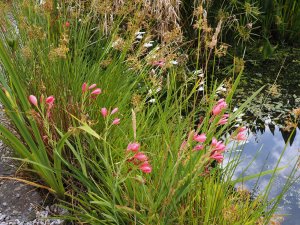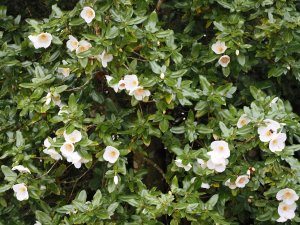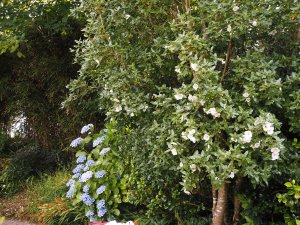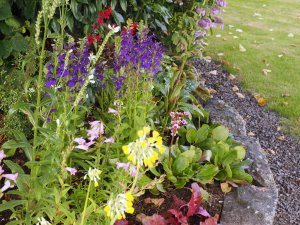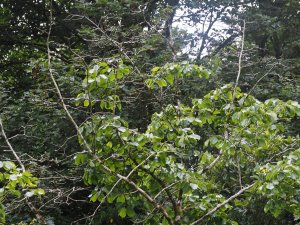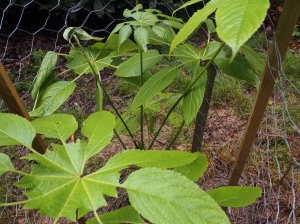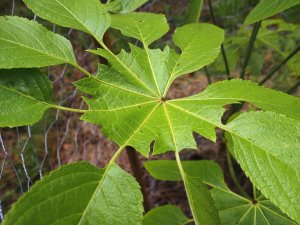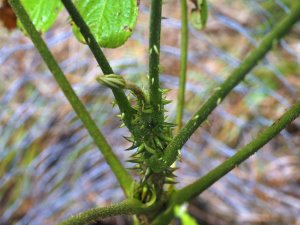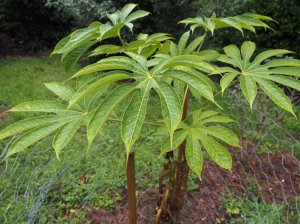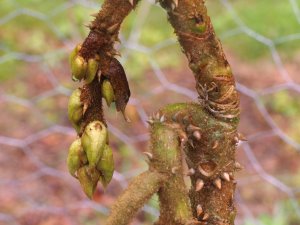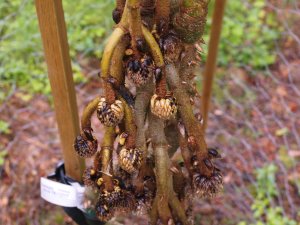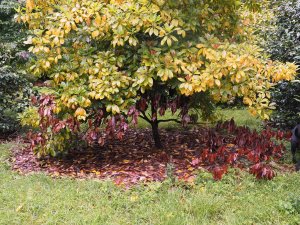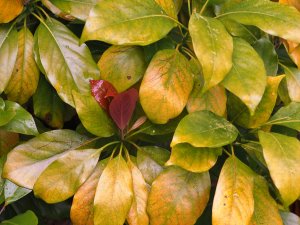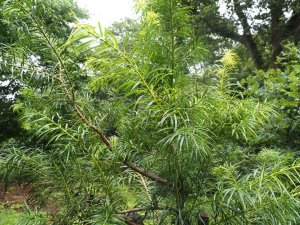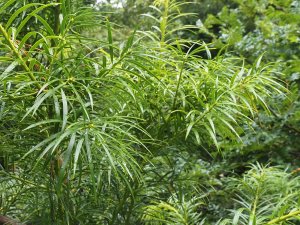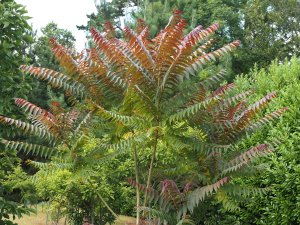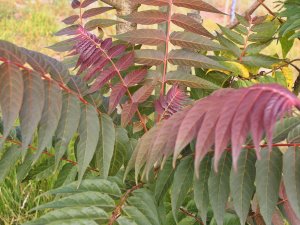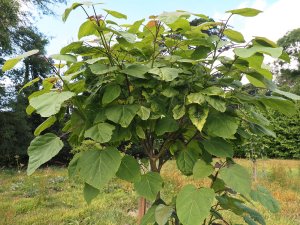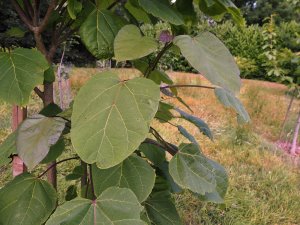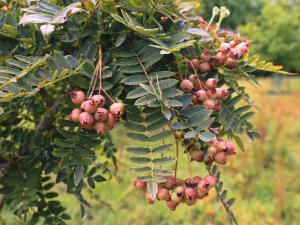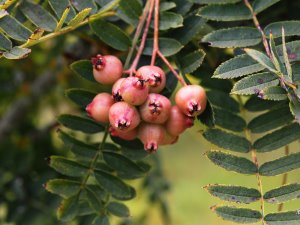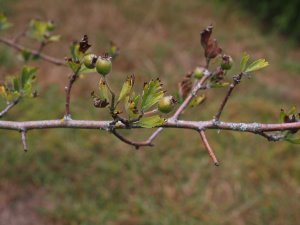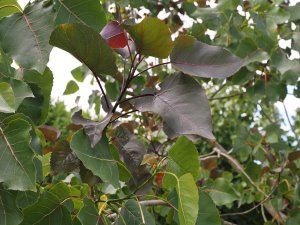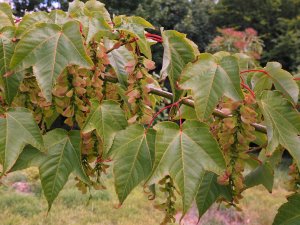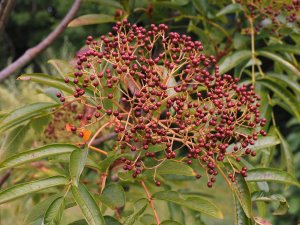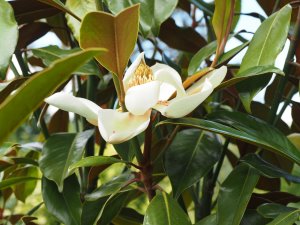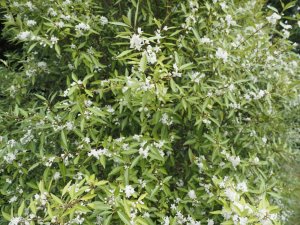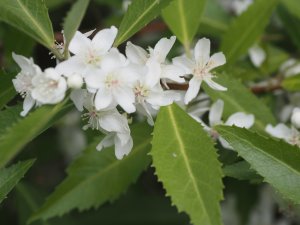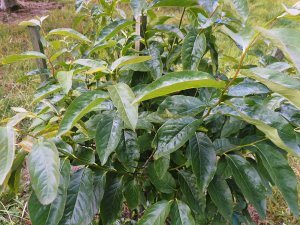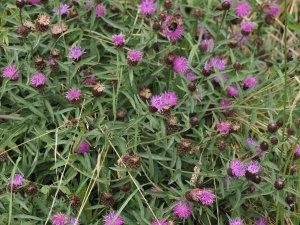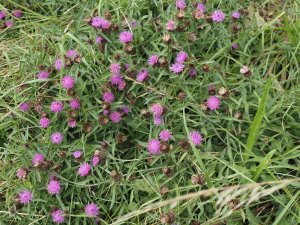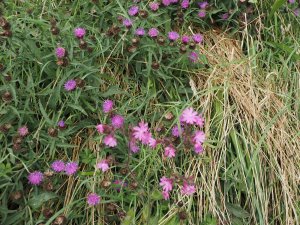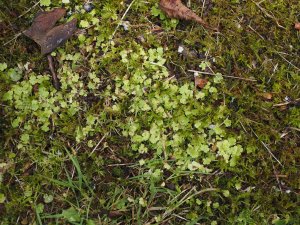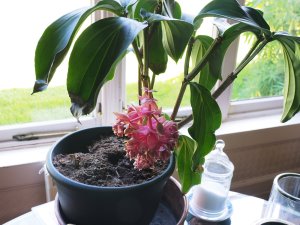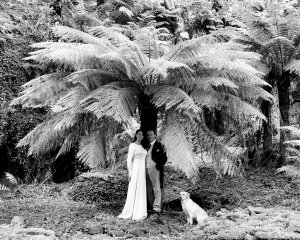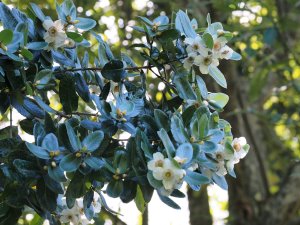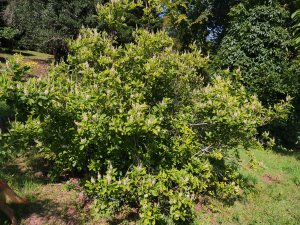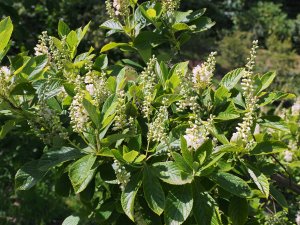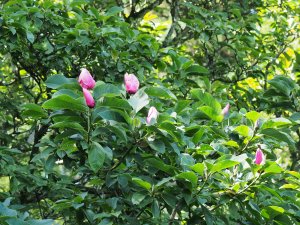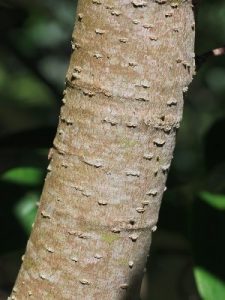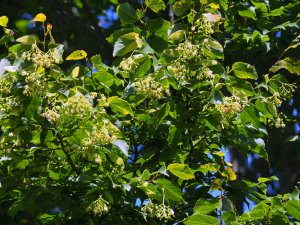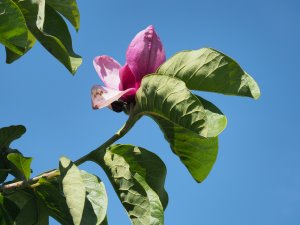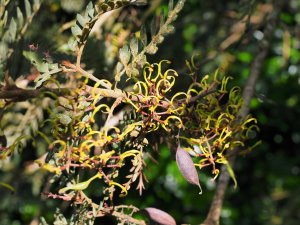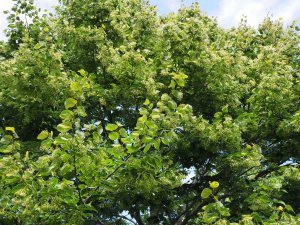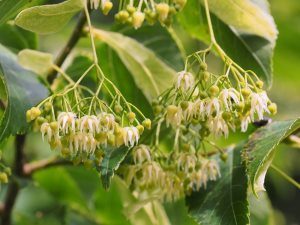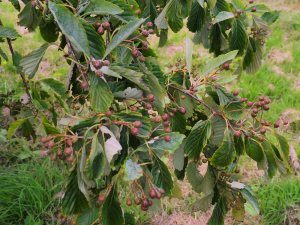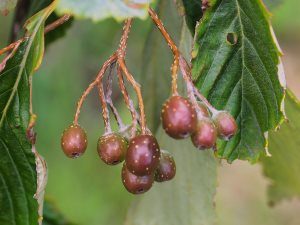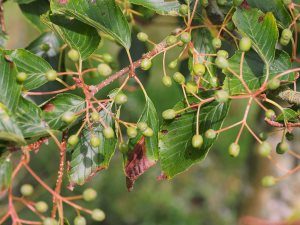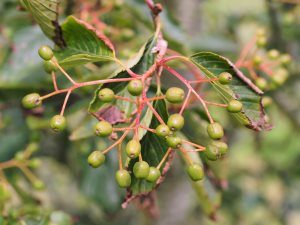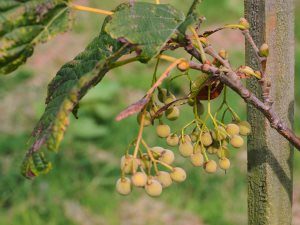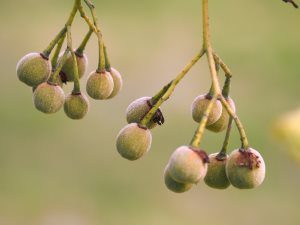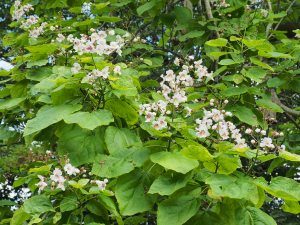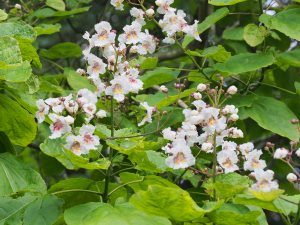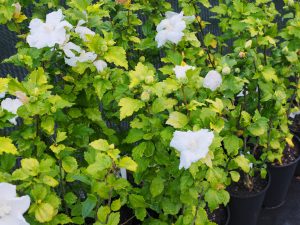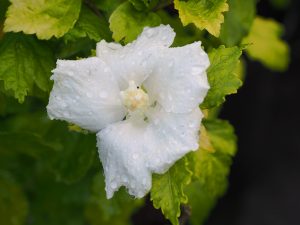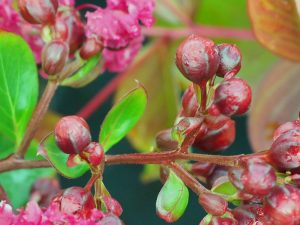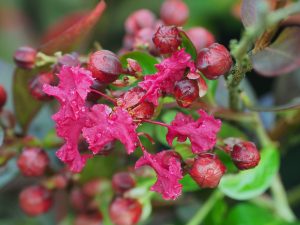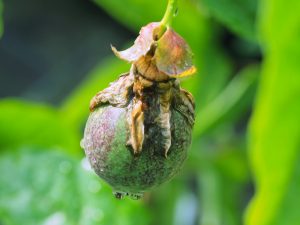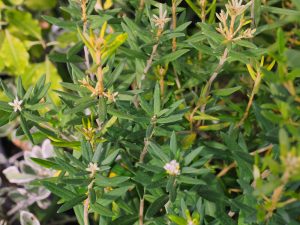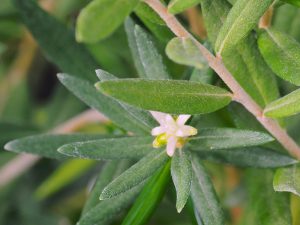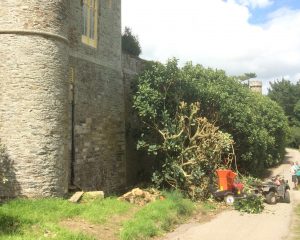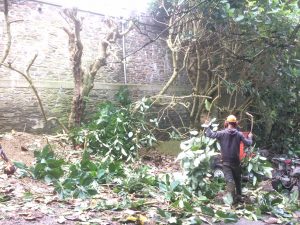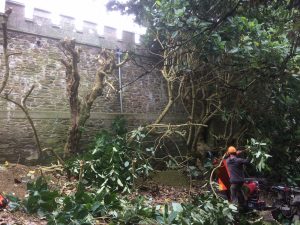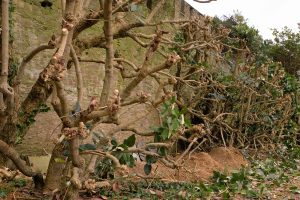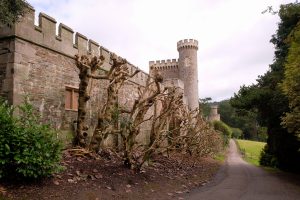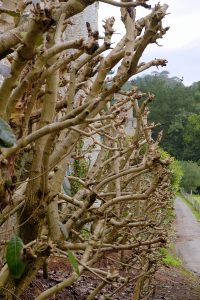2024 – CHW
A summer party at Sithney and a blue flowering bog plant in a pond. I am not in the know on aquatic plants but have seen this growing frequently elsewhere. What I have not seen before is the blue flowers.
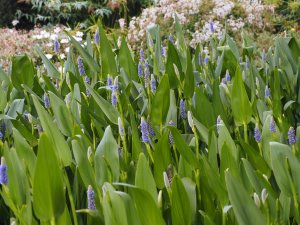
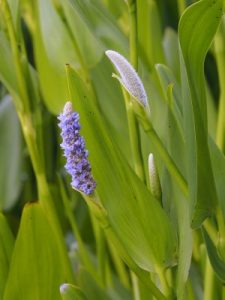
It could be November – howling gale and a night of rain.Our best Magnolia sprengeri var. ‘Diva’ with some severe drought die back. Worse even than last year.
2022 – CHW
The aptly named Carpinus heterophyllus ‘Quercifolia’.
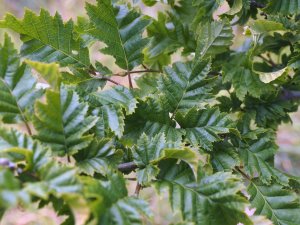
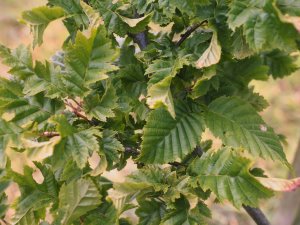
Colin French, author of the amazing pictorial book ‘A Flora of Cornwall’ (547 pages) has been here for the second phase of his wildflower recording work on the farm. This work updates a similar survey 10 or more years ago and will hopefully, in its end report, show a greater diversity of flora than previously as a result of our extensive, low input, low stocking rate farming policy.We have a look at the flora in one or two garden areas which have recently been cleared of trees, roots and laurel hedges and then replanted. Colin’s view is that the plants which have materialised from disturbed soil where their seeds have been dormant for perhaps 60 to 80 years are woodland species and not meadow species. One of the areas we looked at may have been a pasture until circa 1910. The flora which were found earlier in the year in Tin Garden were much more in keeping with what one would have expected in a meadow hedgerow.On the banks outside the front door we revisited the knapweeds. There are two recognised species of common knapweed, Centaurea, and the difference is not the spread or the size of the floret rays but in the covering of the eventual seed cluster below the flower itself. Centaurea nigra has dark black/brown scales with some green showing between them. Centaurea debeauxii has longer brownish heirs on much greener scales. Colin has found C. nigra on the bank here as well as a rare new Cornish species, C. nigra ss, which has only shown up a few times mainly in west Cornwall (C. nigra ss has even darker and tighter black scales with no sign of any green between them). Today, with flowering nearly over, we sadly do not find any C. nigra ss. I fear the difference leaves a non-botanist rather puzzled but then so do many similar rhododendron species.
This is the peculiar houseplant which Beatrix and Gerrit brought here for us in February 2018. I forget the name [it is a Medinella!] but is had decided to flower again this year unexpectedly. There were three plants in this pot in the library but two have died. It is near the night store but has nowhere near enough light when the blinds are down which they have been this year with no visitors.
2019 – CHW
Tilia kiusiana now just out in full flower and the bees having a field day as usual.
A few nice new plants today at Burncoose.Hibiscus syriacus ‘Diana’ is a lovely white in the welcome showers. I have photographed at least five new hibiscus varieties in the last few weeks but not seen this one anywhere else.
2017 – CHW
Hard pruning of the Magnolia delavayi plants below the castle is taking place. It looks drastic and it is intended to be! These elderly plants regrow over the top of the wall at such speed that they obscure the views of the sea from the downstairs windows. They also block the gutters with their huge old leaves above the garages. We are shredding all but the largest branches and leaving the residue as a mulch for the roots. You can see two days’ worth of progress in these pictures. At least two more to go. We will leave the Magnolia grandiflora beyond the delavayi uncut because there is a demand for their bark from a peculiar source! (And I am not telling you what that is!)
2016 – CHW
No entry.
2015 – CHW
No entry.
1992 – FJW
Has been damp for a month with no really heavy or prolonged rain. Eucryphia of all sorts are out well – very early for them.
1962 – FJW
Philips operation a success. Season still late – Eucryphia not nearly out. Auriculatum hybrids lasting well. Acer laxiflorum above Orchid House Nursery died suddenly.
1918 – JCW
Michael went round with me, he has not been here since January 15, he was very keen about the things, nothing much open now but the mountain forms.




